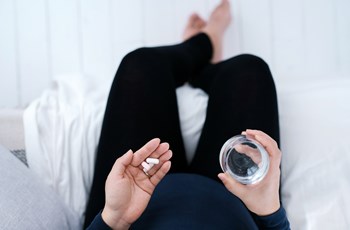Curious About Iodine, Beyond the Thyroid
The role that iodine plays in the thyroid is well established. We need iodine to make thyroid hormones, and the numeric designation in T3 and T4 represents the number of iodine molecules attached to the amino acid tyrosine. In part one of this series on iodine, I examined the versatility of this unique element and its uses throughout history and explored the sources and forms of iodine found in foods and supplements. In part two of this series, I take a closer look at the role that iodine plays in the thyroid and in various extrathyroidal tissues where it supports breast health, ovarian function, fertility and the normal development of the brain and nervous system in the fetus and newborn.
Tissues that concentrate iodine
Iodine is present in every organ and tissue of the human body in differing concentrations (1). The total body concentration of iodine is estimated to be 15-20 mg. The amount of iodine stored in the thyroid depends on total body iodine sufficiency. The lower our body concentration of iodine, the greater the percentage of dietary iodine sequestered by the thyroid. Higher total body content would result in a lower overall percentage of dietary iodine being sequestered by the thyroid, which allows for wider distribution of iodine to extrathyroidal tissues. In a state of iodine sufficiency, approximately 50-70% of total iodine goes to extrathyroidal tissues (1).
In addition to the thyroid, other tissues that store iodine are the breasts, ovaries, prostate, uterus, placenta, thymus, salivary glands, lacrimal glands, eyes, skin, gastric mucosa, choroid plexus, renal cortex, pancreas, liver, small and large intestinal mucosa, nasopharynx, and the adrenal cortex (2). While the thyroid tends to concentrate a higher percentage of iodide (I¯), extrathyroidal tissues tend to utilize a greater percentage of molecular iodine (I₂), which exerts multiple and complex actions related to its role as an antioxidant, an anti-inflammatory, a pro-inflammatory, an inducer of apoptosis, an immune modulator, and a promotor of cell differentiation (3).



Admin
Lorem ipsum dolor sit amet, consectetur adipiscing elit, sed do eiusmod tempor incididunt ut labore et dolore magna aliqua.
admin
Ut enim ad minim veniam, quis nostrud exercitation ullamco laboris nisi ut aliquip ex ea commodo consequat.